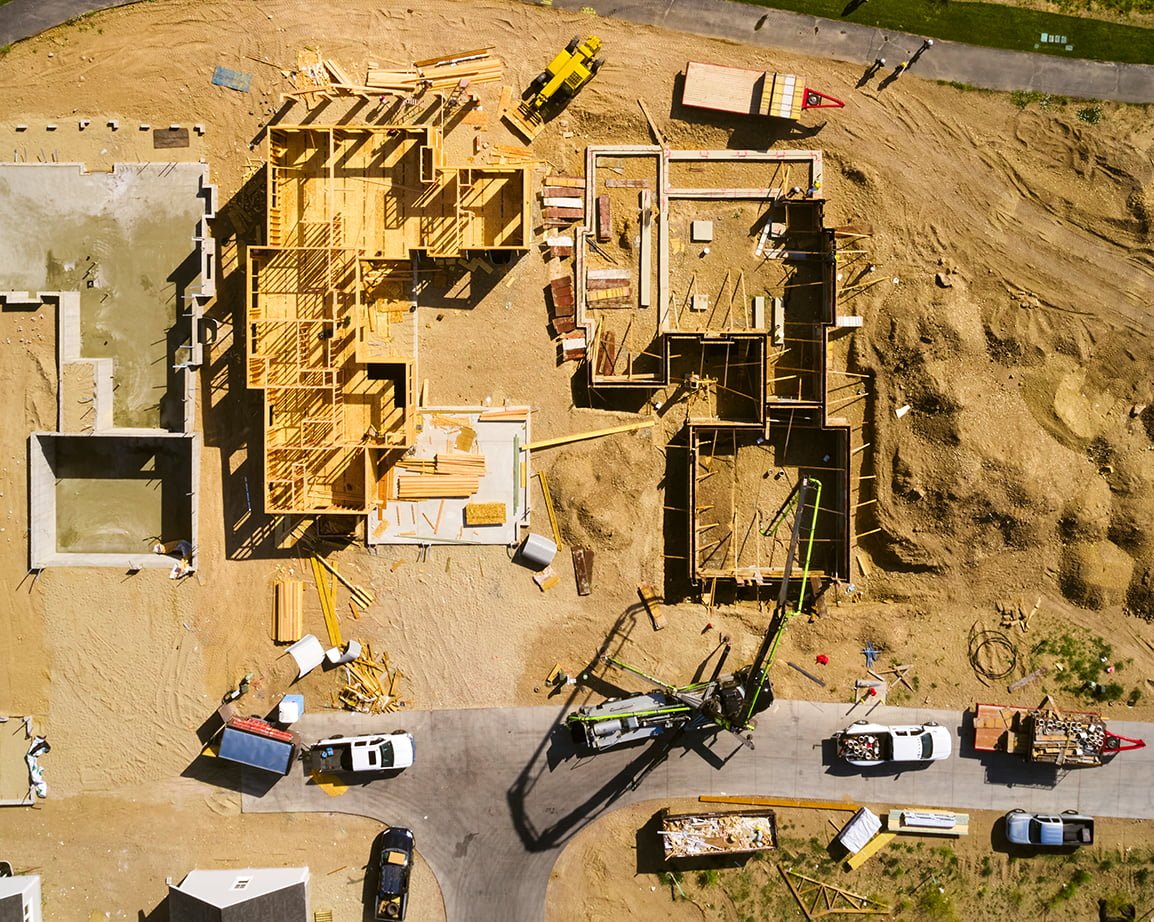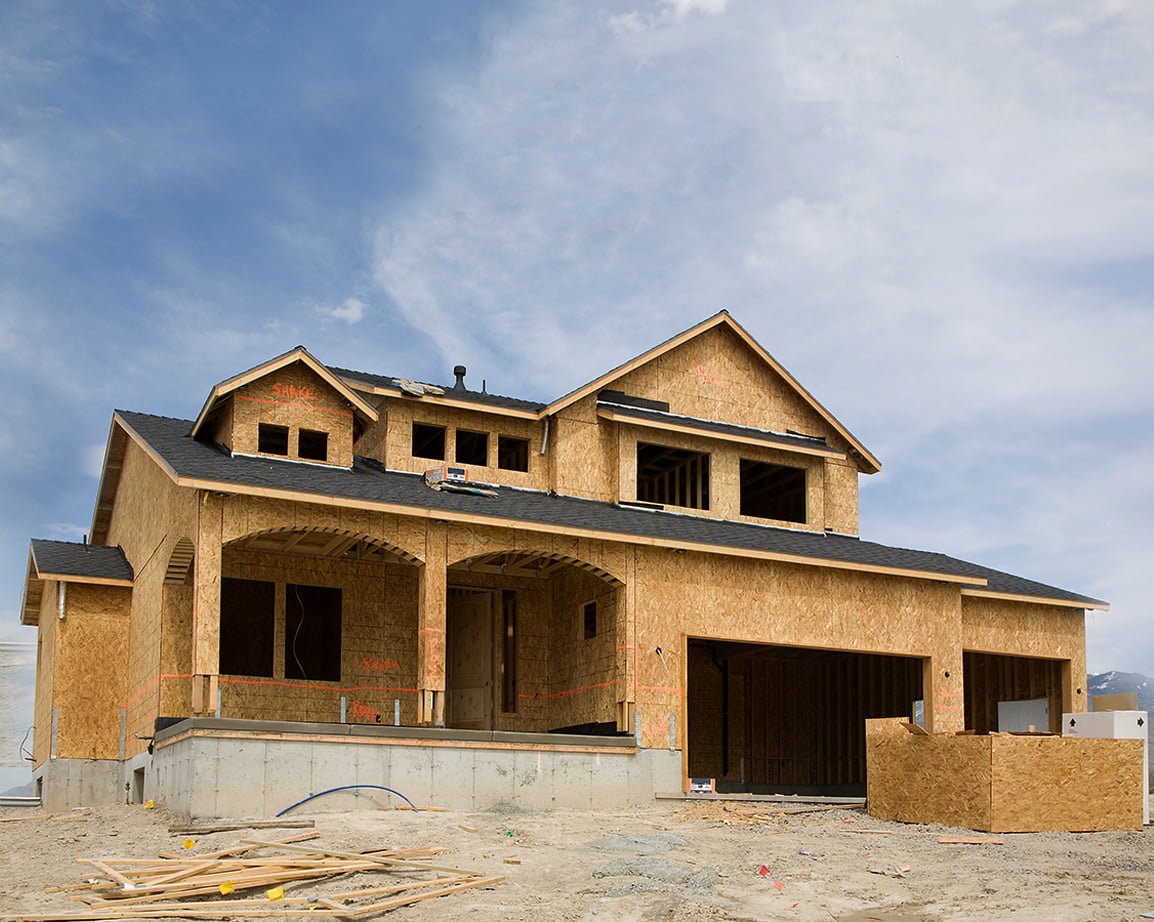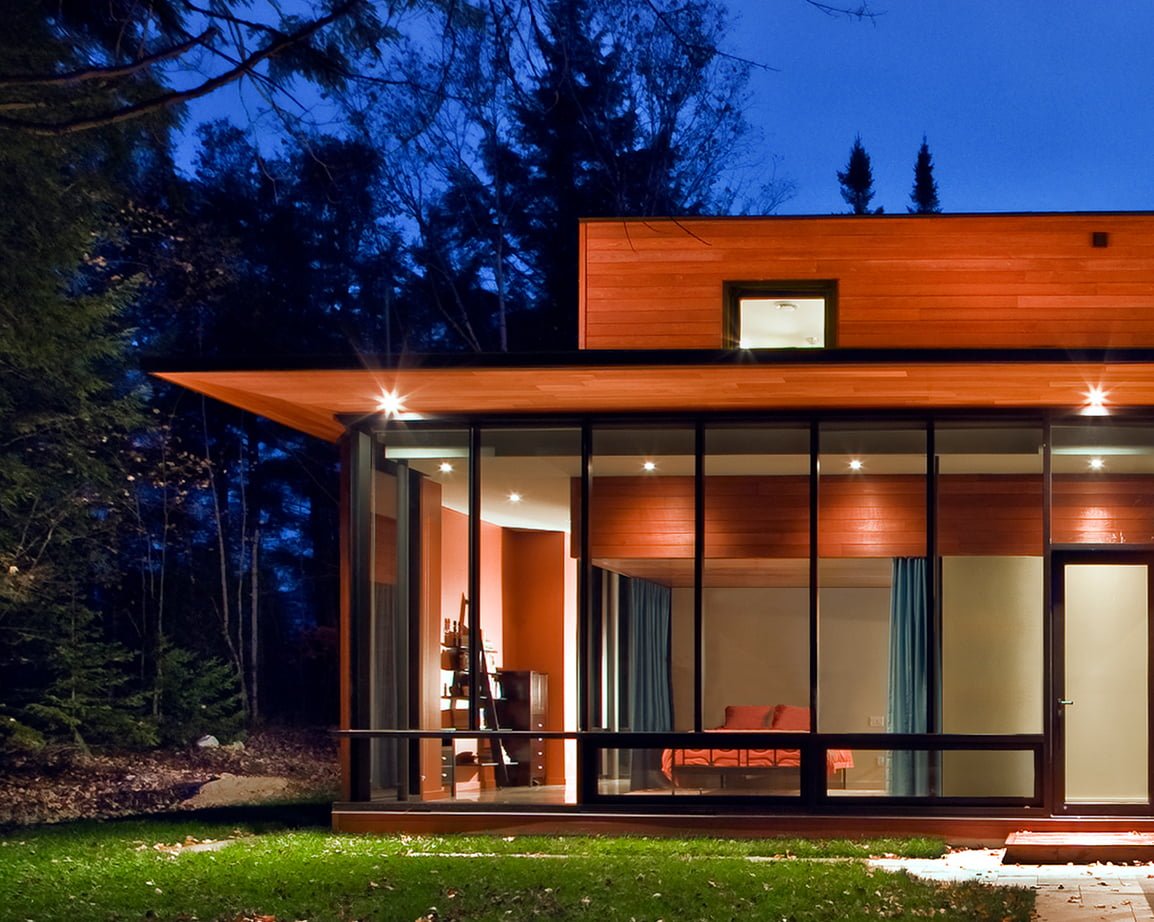Building a custom home is an exciting journey. But when many people begin, they aren’t sure about which path to take: whether to hire an architect or a design-build firm.
Most of my clients have no prior experience working with architects and very little working with contractors, so I always get the question, “if I hire you and a contractor, who becomes responsible for what?”
What they’re seeking to understand are the services I provide, and how I work with the firm they hire to build the new home I design for them.
There’s a lot to unpack in that seemingly simple question, so I’ll start with a few definitions.
Definitions: Design-Build and Architecture Firms
A design-build firm offers both design and construction services as a single solution.
An architecture firm provides services related to the design of the home, and homeowners hire a general contractor separately to do the actual construction work. (While the exact services an architect provides differ from firm to firm, I help represent my clients’ interests should any issues with the construction arise — more on that below.)
Which is “better”? As an architect, of course I think the second option is better for those who want to build a custom home.
But for those who are tempted by the design-build option, I have some important points to make that will help you understand what each approach provides.
The Main Difference: Truly Custom Design
The most important thing to realize when dealing with this question is that it all hinges on what we mean by “custom”, because both design-build and architecture firms offer so-called custom homes. The difference lies in what actually happens in the design process.
To help you understand this, I think it will help to look at the home construction industry in general, and what “custom” means to the different types of providers.
“Custom” According to Property Developers
Most single-family homes in North America are built as speculative investments. What generally happens is that a developer buys a large tract of land and subdivides that into as many private lots as possible.
The developer then markets a few different house types that are nearly identical, but with the spin that homebuyers are getting something unique. As an analogy, consider how an auto maker may have two or three versions of one car, with each version featuring a few extra bells and whistles and a higher price.

Long before that car hits the market, the automaker has made numerous prototypes. They have figured out how to make that car as cheaply as possible to maximize profits, and yet remain compliant as possible with safety rules, environmental regulations, etc.
The car is then marketed across a span of desirability promotions ranging from categories like “entry level” (in housing terms this would perhaps be a townhouse, or rather a “garden home”) to perhaps the ultimate “limited edition” (what is now often termed a McMansion).
Buying a home from a developer generally means buying something absolutely generic, set upon a denuded and flat lot that enables the developer to build the same designs repeatedly and as quickly as possible.
Like the car dealer who asks if you’d like the sun roof or leather seats as an extra, the developer will ask if you’d like “this” countertop or “that” trendier and pricier tub, backsplash, etc. In the end, however, one version is 99% the same as the next.

“Custom” According to Design-Build Firms
Design-build firms take up where the property developers leave off, serving the clients who can afford something more superficially personalized and larger — especially larger — we’ll return to that point in a moment.
These firms know that their clients want something that speaks to their tastes and preferences, but also that most people will accept almost any structure, as long as they’ve seen similar things before in design magazines.
There may indeed be a sincere effort to give the client what they want in terms of answering the items on their wish list. But, intentionally or not, there is no effort put into creating a home that goes beyond the initial wish list and into the kind of creative problem solving that finds efficiencies in the structure and in construction costs. In other words, in order to fulfill the client’s goals, they end up building a much larger and more costly structure than the client needs.
There’s the rub, because the differences between the entry-level garden home and the customized home built by a design-build firm are almost completely superficial. There are much better countertops, more windows, and nicer flooring. But, finishings aside, the building looks and functions more or less like the smaller homes their clients started out with.
Typically, these homes do not incorporate the specific site landscape into the design, or the long term needs of the client as they age. Like the property developers, design-build firms have found a formula for construction, and it gets minor adjustments as per client requests. To return to our automobile example, it’s like a factory-made car that’s customized in an auto body shop after the fact. But under the hood, it’s got the same engine and other mechanical parts.
When you look at the structures of the ostensibly custom homes created by a design-build firm, you’ll start to see the same patterns that have been used hundreds of times before.

“Custom” According to Architects
A truly customized home is like a concept car: it’s a whole new prototype. A custom home starts from a blank slate, with a new set of structures developed to create a whole new way of living.
To be a truly custom home, a structure must have a shape that develops out of the intersection of the client’s needs, the landscape, and any regulatory requirements that exist for the area.
A truly unique home should not look like anything you’ve seen before. It will almost always be much smaller than a McMansion. Because it’s so well designed, it is blissfully functional for the people who live there — and on a much smaller footprint.
Because we at Kariouk Architects design truly custom homes, no two structures in our portfolio look alike.
More Reasons to Choose an Architect
There are other reasons to consider hiring an architect over a design-build firm.
Depth of Detail in Design/Contract Documents
Contract documents are what some people call the plans or the “blueprints” of a home.
Architects use the maximum level of detail in our contract documents in order to protect you from lower quality construction methods and substitutions of any kind.
We specify the thousands of parts in a home, showing what order things need to be built in to get the level of quality that will ensure a comfortable home that lasts a lifetime. In the case of our firm, we include materials and finishes as well, so there is complete transparency for the contractor as to what they need to build.
Design-build firms have no reason to go to this level of precision, and some use lack of detail as an opportunity to cut corners during construction and maintain profitability for the project as a whole.
The Value of Oversight of the Construction Process
Most architecture firms, mine included, will provide regular inspections of the build site while construction is in progress to help ensure that the project is being completed according to the detailed contract documents.
In the event of a mistake by the general contractor, we are your advocate to ensure that the error gets corrected.
Design-build firms, on the other hand, don’t have that separation, and end up monitoring their own work. In my opinion, this is a conflict of interest, leaving the client with few options if there’s a dispute.
Cost
Are custom homes more expensive? It depends if you’re in it for the short or long haul.
When we design a home, we take the long view, expecting you to live in your home for decades, even when you’re a senior with very different mobility needs. We may take steps to ensure that we include a caregiver suite, for example, or we may allocate space for a small residential elevator so that if our clients’ mobility ever becomes impaired, they can easily make this modification and continue to dwell in the home they love.
A “custom” home built by a design-build firm is often designed without these considerations. The designer may assume that when the original owners age, they’ll sell the home and move to a more appropriate one, because that’s what North Americans normally do.
Canadians own an average of five homes in their lifetimes, and with each move comes a host of additional costs, like legal fees, land transfer taxes, and capital gains taxes that may sour the otherwise sweet taste of a home that appreciates in value.
Aside from ensuring long-term value, as an architect part of what I do is help my clients understand and control construction costs through strategic design choices. Basically, for one fee, I can design a home that can meet larger or smaller budgets.
A Better Way to Build
To be clear, I’m not saying that all design-build firms are “bad”; for some situations, like renovations, there are some that provide a good service.
When it comes to building a truly custom home, however, I’ll continue to assert that an architecture firm like ours provides a better product that stands the test of time.
In the end, my clients end up with better value for their budget.


